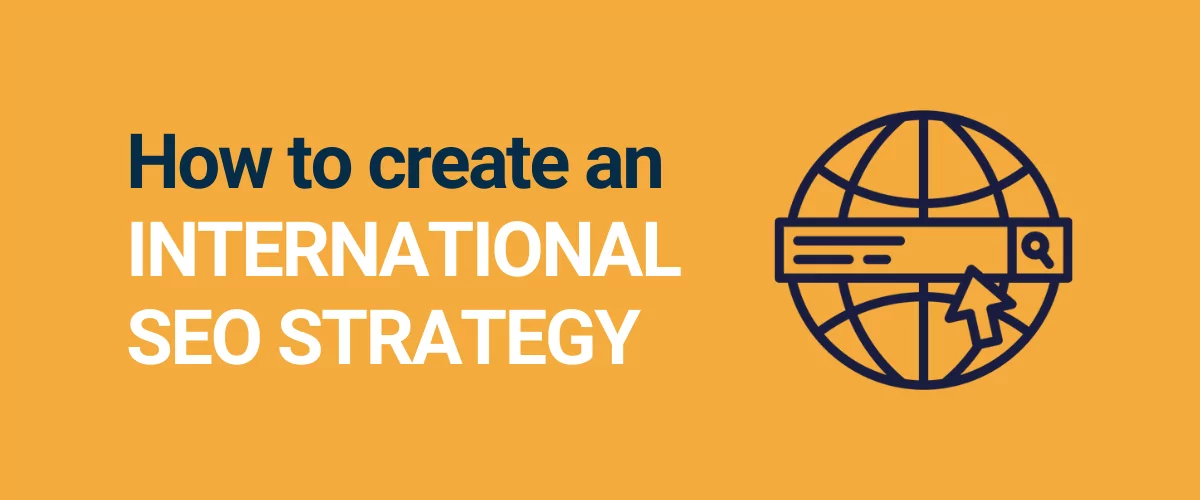
In this post
Trying to develop an international SEO strategy so that you can start ranking your website for search queries in different languages and locations?
We live in a global world, so having a global SEO strategy is a great way to account for that and give your site a chance to connect with more visitors and get more traffic.
However, international SEO can sometimes feel a bit overwhelming because you need to localize your website, optimize for multiple languages, and just generally implement some best practices if you want to be successful.
To make international SEO a lot simpler, we’re here to help. We’ll start by digging into the key steps to creating an effective strategy. Then, to make it easy for you to apply these principles to your site, we’ll share an international SEO checklist that you can use to make sure you haven’t missed anything.
Let’s dig in!
What Is International SEO?
In a nutshell, international SEO is the idea of improving your website’s organic search rankings in multiple languages or locales.
For example, instead of only ranking your content in English, you could rank your content in Spanish and German as well.
In some situations, your site might be in the same language, but just targeting different locales. For example, you might have two English-language versions of your site—one targeting English-speakers in the USA and another targeting English-speakers in the UK.
By targeting multiple languages and/or locales, you can…
- Increase the number of keywords that you can rank for (because you’ll be able to rank for keywords in different languages);
- Connect with more people by improving your search visibility. For example, ranking in both Google.com and Google.co.uk;
- Create a more user-friendly experience once people land on your site because they’ll be able to browse in their preferred languages and just generally have a localized experience.
In order to target multiple languages, you’ll need to create a multilingual website and translate/localize your content.
We’ll touch on this in more depth later on, but if you’re using WordPress, TranslatePress offers a very simple way to create an SEO-friendly multilingual website using a visual editor like this:
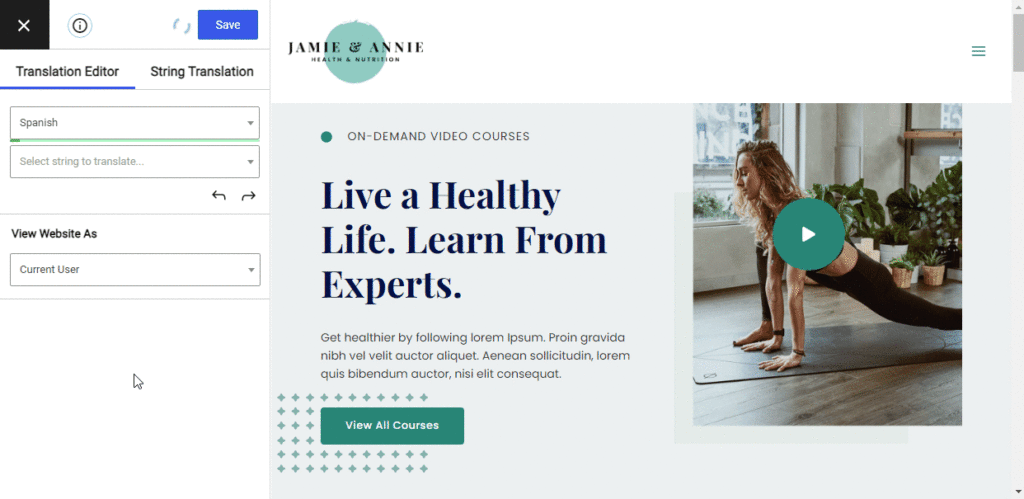
If you want a sneak peek now, we have a detailed guide on how to create a multilingual WordPress website.
Whether you’re trying to reach new customers to sell products or services or you’re just trying to boost traffic to your website, there’s a lot to like about international SEO.
However, while basic SEO principles will apply in any language, there are some specifics you need to consider when it comes to creating your international SEO strategy.
Over the rest of this post, we’ll focus on how to create a solid global SEO strategy to grow your site.
How to Create Your Own International SEO Strategy
At a high level, there are two “parts” to a strong global SEO strategy:
- Research – there are some key research steps involved before you start jumping into the technical details of global SEO.
- On-page SEO – there are key considerations and best practices to implement when translating your site and optimizing it for local search queries.
Below, we’ll go through all of the important strategies, starting with research and then shifting into more of the technical steps.
Step 1. Discover Your Potential in Different Locations
In order to maximize your efforts, you’ll want to offer your site in the languages that give you the best return on investment (ROI).
So—how can you choose which languages and locations to target in your global SEO strategy?
Well, there are a few strategies.
First off, you can see where your visitors are already coming from. If you see a lot of visitors from one region, that might be a sign that you should create a dedicated local site for that region to boost your traffic even further.
If you’re using Google Analytics, you can check this by using the following reports – Audience → Geo → Location OR Language (both reports are useful):
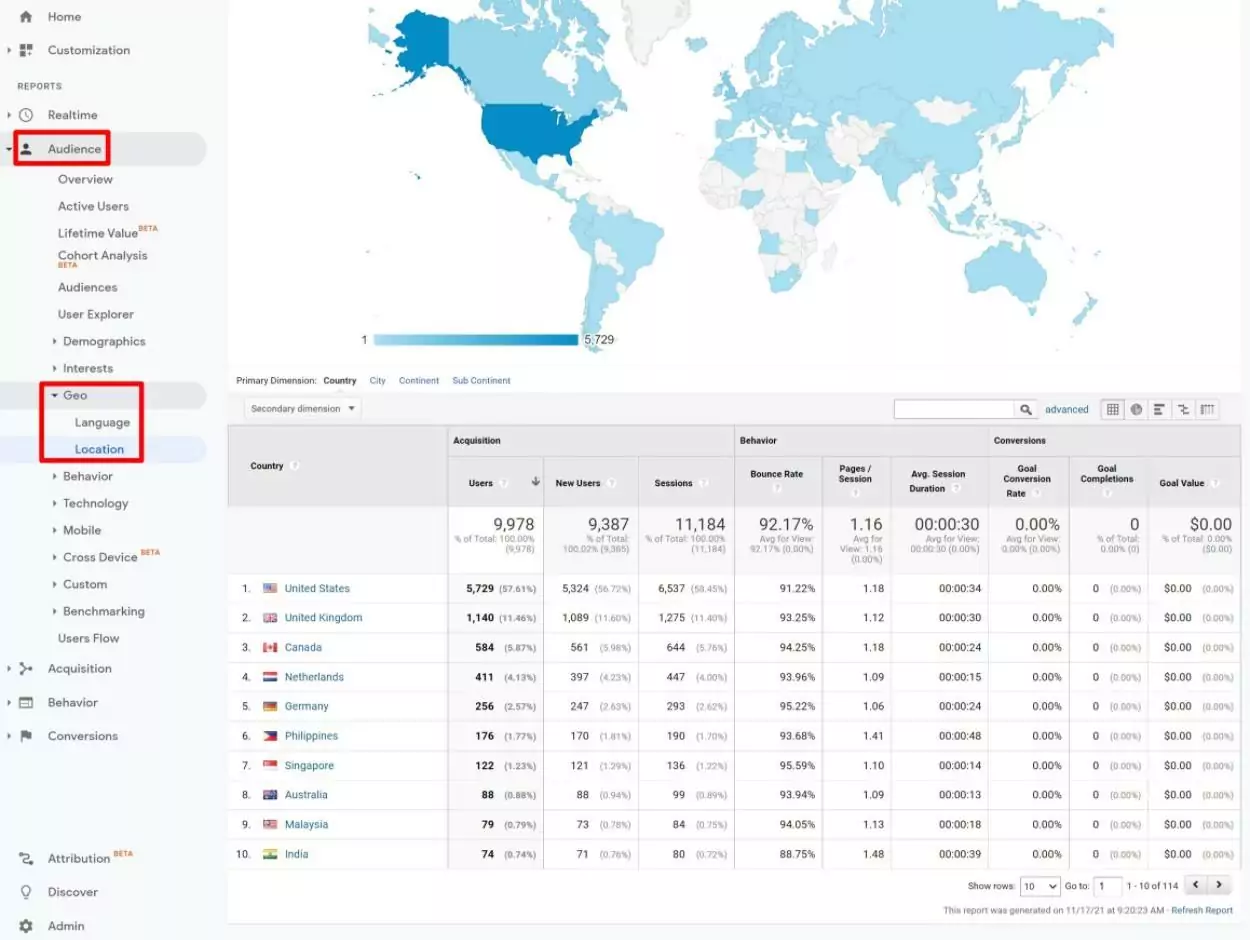
Another useful tool is Google’s Market Finder, which helps you explore data to find new markets for your business. It’s not perfect, but it can provide some useful insights on potential locations to target:
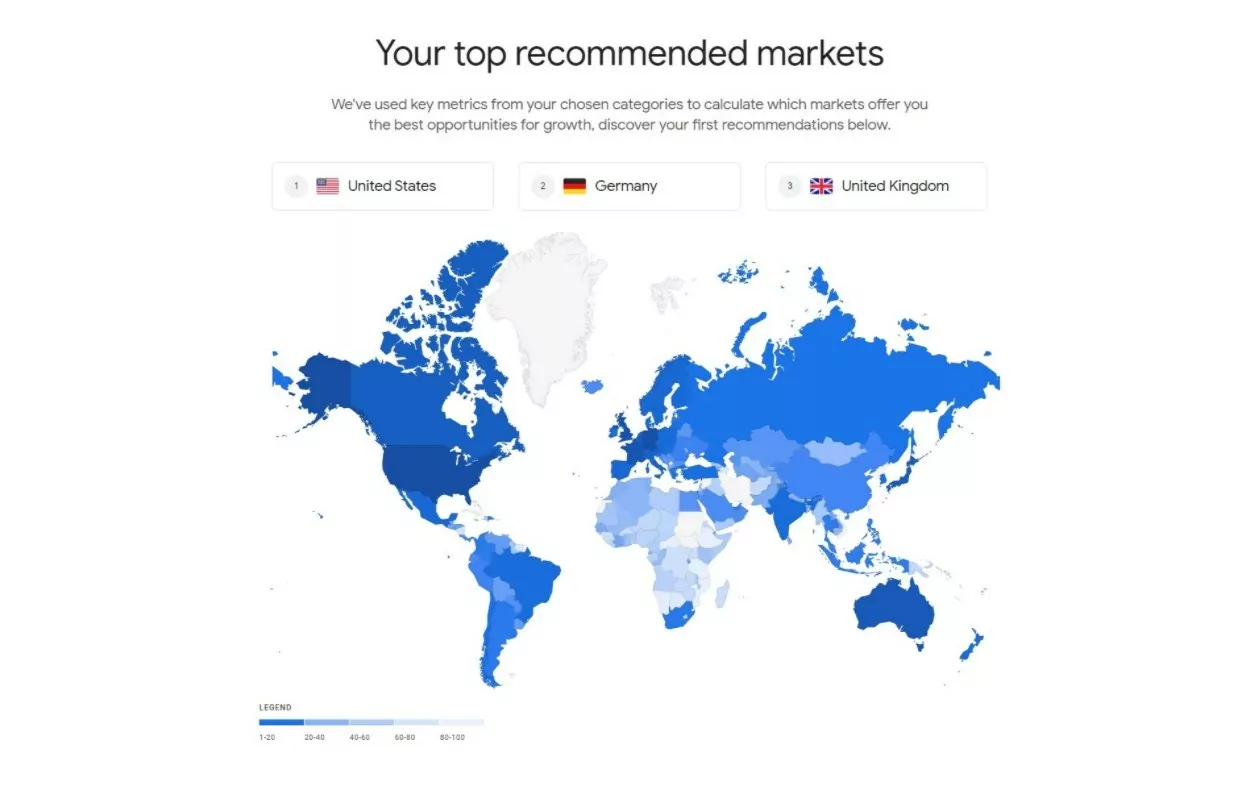
Step 2. Perform International Keyword Research
If you’re already implementing an SEO strategy in your site’s original language, you’re probably familiar with the importance of keyword research.
Keyword research lets you discover what people are searching for so that you can optimize your content for the search terms that offer the best ROI.
Well, guess what—the same idea applies to your international SEO strategy. If you want the best ROI, you’ll want to perform keyword research in each language/locale that you’re targeting.
Thankfully, most quality keyword research tools make it easier to filter keyword suggestions and volume based on searchers’ languages/locales. This includes KWFinder, Ahrefs, SEMrush, and so on:
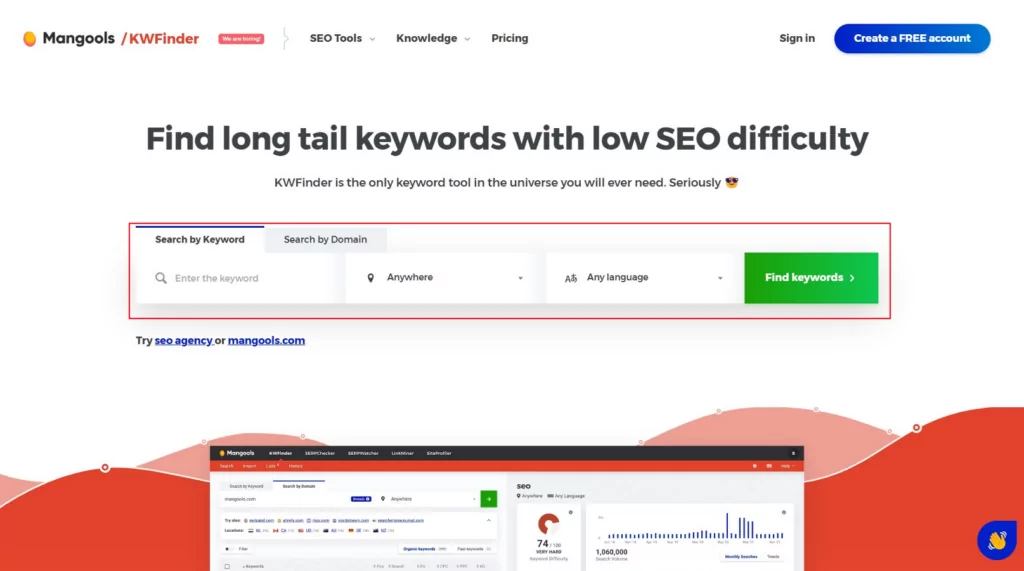
Step 3. Perform Competitor Research
Beyond seeing what keywords are worth targeting, it’s also important to research what your competition will be like in other locales.
Will you be going up against other sites that have implemented a multilingual SEO strategy or will you be going up against purely local sites? What’s more, how competitive is the landscape in general?
Understanding competition is essential for two reasons:
- It can help you understand whether it’s even worth it to try to target that locale in the first place.
- It will help you know how much effort you’ll have to put into optimizing for that locale.
You can perform global SEO competitor research just like you’d research competitors for a single-language site. If you’re not sure where to start, tools such as Ahrefs and SEMrush are very useful.
Step 4. Consider Local Search Engine Preferences
When most people think of SEO, they think exclusively of Google. And that’s for a good reason—Google is the dominant search player in most locations around the world. However, it’s not the only dominant player in all locations.
So when you’re developing your international SEO strategy, you’ll want to perform some quick research to see whether Google is the major player in all of your locales or if you need to be optimizing for a different search engine.
In general, here are some of the popular locations where Google is not the dominant search engine or where Google has a legitimate competitor:
- China – Baidu or Sogou are the dominant search engines as Google isn’t available in most of China (though it is available in Hong Kong and Macau).
- Russia – Yandex is slightly more popular than Google. The same holds true for some other Eastern European countries.
- South Korea – Naver is the most popular search engine.
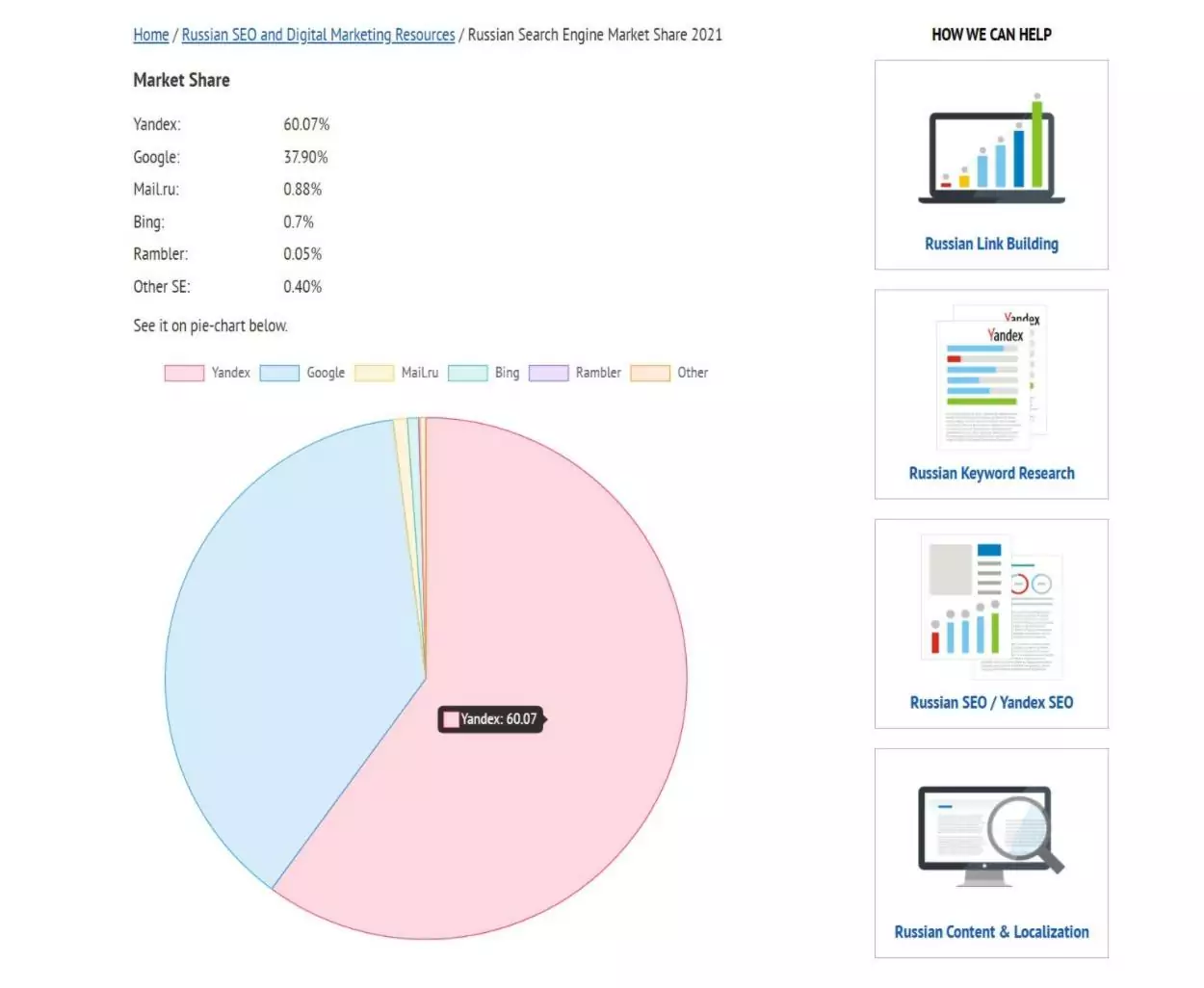
Source: SEO-Russia
Google dominates in most other locales, but it’s still worth performing a quick check for your chosen locales. There are also some markets where, while Google still holds most of the market share, local search engines have enough market share to be relevant.
For example, in the Czech Republic, Seznam holds an ~11% market share. While certainly not dominant, it might be worth exploring how to optimize for that 11% to make the most of your SEO strategy.
Yahoo also has an oddly large market share in Japan, though it’s been dropping in recent years. Yahoo Japan actually adopted Google’s backend for search, though, so there’s little difference in terms of optimization.
Step 5. Use Optimized URL Structures
Now, we’re going to start pivoting into the more “on-page” aspects of your international SEO strategy.
If you want to benefit from SEO for international markets, it’s important that each language version of your site is fully indexable by Google and other search engines. That means every piece of translated content needs its own dedicated URL.
For example, the original English version of your site might be located at yoursite.com and the Spanish language homepage might be located at yoursite.com/es.
There are three common URL structures that work for international search engine optimization:
- Subfolders – you create a subfolder for each language, like the example above. For example, the original post would be at yoursite.com/example-post and the Spanish-language version would be at yoursite.com/es/example-post.
- Subdomains – you create a subdomain for each language. For example, the original post would be at yoursite.com/example-post and the Spanish-language version would be at es.yoursite.com/example-post.
- Separate domains – you use a separate localized domain name for each language. For example, the original post would be at yoursite.com/example-post and the Spanish-language version would be at yoursite.es/example-post.
Google says that all three approaches are acceptable from an international search engine optimization perspective, so a lot of it comes down to personal preference.
When in doubt, using the subfolder approach is a great starting point because it’s the easiest to implement and doesn’t require any complicated domain mapping.
Step 6. Localize Your Content (More Than Just Translation)
When it comes to creating content for each language/location that you’re targeting, translating your existing content is obviously the largest task. However, translating content isn’t the only part of creating a local site.
If you want to optimize your international SEO strategy, it’s important to focus on localizing your site rather than just translating content.
Here are some examples of additional localization steps that go beyond just translating your content into different languages:
- Displaying different images based on a user’s language so that you can make sure every image is optimized for that language;
- Updating cultural references to apply to that language/locale;
- Updating currencies to use the local currency;
- Using local units of measure (for example, Metric instead of Imperial);
- Adjusting the layout of your site to make sure it fits the size/layout of each language;
- Adjusting the format for dates and numbers. For example, day/month/year vs month/day/year.
For more details, check out our full guide to website localization.
Step 7. Add the hreflang Attribute
The hreflang attribute tells Google and other search engines which language or locale each piece of your site’s content is targeting. What’s more, it can also connect your content to the same version of the content in other languages.
It basically says, “hey Google, this is the version of ‘Page A’ in English and this other page is the version of ‘Page A’ in German”.
It can also go beyond just specifying the language, and also target locales. For example, “this is the version of ‘Page A’ for Spanish speakers from Spain and this is the version of ‘Page A’ for Spanish speakers in Mexico”.
Google is pretty smart and it can often figure out these details by itself. However, specifically adding the hreflang lets you guarantee that Google and other search engines are getting accurate information about each page’s language and locale and where that page is available in other languages.
While you can add the hreflang attribute manually by inserting some behind-the-scenes code in your site’s header, a better option is to choose a multilingual website tool that will automatically add hreflang for you.
For example, if you use TranslatePress to create a multilingual WordPress site, TranslatePress will automatically add the proper hreflang attribute to each page and to your XML sitemap so that you don’t need to lift a finger.
Step 8. Optimize URL Slugs
We already talked about optimizing your URL structure above, but it’s also important to translate the URL slug.
The URL slug is the unique identifier for each piece of content on your site. For example, if you have a blog post at yoursite.com/hello-world, the URL slug would be hello-world.
It’s a good general SEO practice to always try to include your main keyword in the URL slug. However, when you’re talking about international SEO, that means that you also need to translate the URL slug for each language.
Sometimes, this might be a literal translation of the URL slug in the original language. In other situations, you might want to use a completely different URL slug based on your international keyword research.
Step 9. Translate SEO Metadata and Social Graph Information
You probably know that your site’s SEO title and meta description play an important role in search engine optimization.
Well, if you want to perform SEO for international markets, it’s important that you translate and optimize your SEO metadata for each language and locale just like you did for the original language.
You should localize the title and description to optimize click-through rate (CTR) and to include keywords from your international keyword research.
Don’t stop at just the SEO metadata, though. You’ll also want to translate your social media graph information so that your site has localized content when people share it on Facebook and Twitter.
If you’re using WordPress, a translation plugin like TranslatePress will let you easily translate the metadata that you’ve already added with SEO plugins like Yoast SEO and Rank Math, which makes it very easy to set this up.
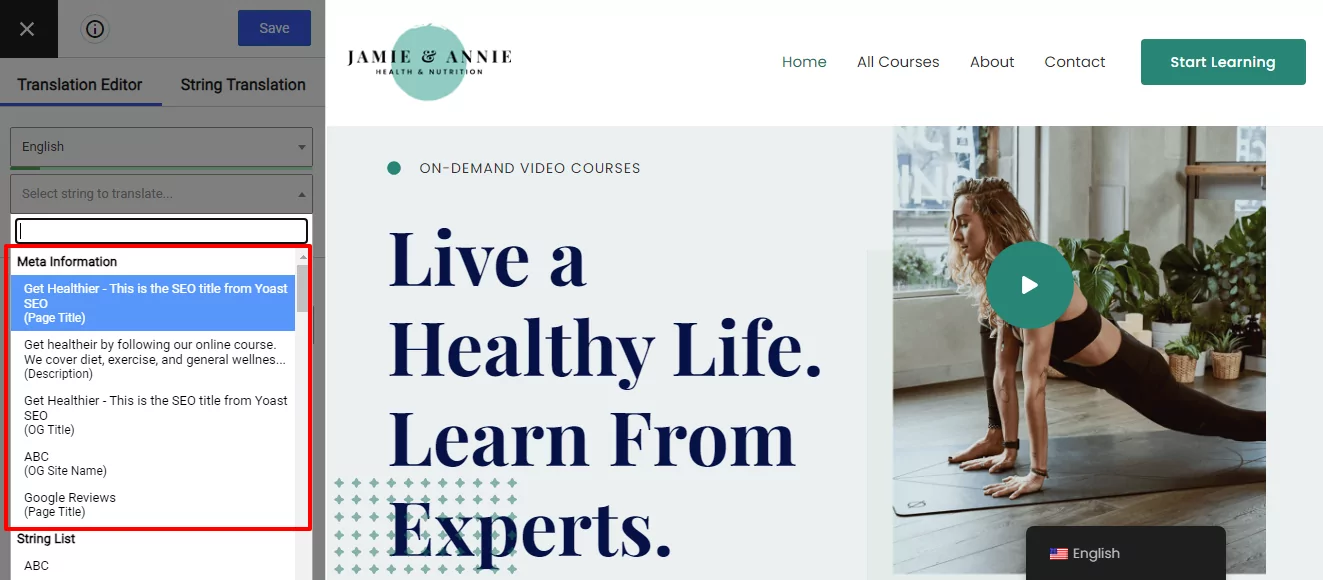
Step 10. Add Local SEO Signals
Sometimes the best way to boost your international SEO strategy is to go local in the locations that you’re targeting.
For example, you can create profiles on local social media sites and add those to the localized version of your site.
Or, if you have a physical presence in the country, you can add physical location information to the localized version of your site. This will signal to search engines that you’re active in that region.
Other types of local SEO signals you can add include:
- Linking to local content;
- Using a localized domain name with a country code. E.g. a .ca domain name for your Canadian site;
- Using a local web host or setting up a content delivery network (CDN) to improve your site’s load times in that country. For instance, RocketCDN is a powerful and easy CDN to deliver your content quickly—no matter where your users are located.
Step 11. Build Links from Local Resources
If you’re familiar with SEO, you know that building links is one of the biggest ranking factors in Google and most other search engines.
Getting backlinks from any quality site will improve your rankings. However, if you really want to optimize for global SEO, it can be beneficial to specifically build links from local resources in the language/locales that you’re targeting.
This is especially true of competitive international niches, which is why we recommended performing competitive research earlier in this post. For low competition niches, you might be able to get by with the strength of your domain and the quality of your localization and on-page SEO.
However, for competitive niches, you’ll likely need to build links to your localized content. And, when it comes to building links, working with a link building agency, especially one that secures links from local resources, sends a powerful signal to search engines that your site deserves to rank for queries in that language/locale.
Your International SEO Checklist
Now that we’ve discussed the best practices above, let’s put everything together into an easy-to-follow international SEO checklist.
First, let’s talk about the research that goes into developing an international SEO strategy. You’ll want to:
✔️ Analyze your potential in different locations to choose the optimal locales.
✔️ Perform international keyword research to further discover the potential of different areas.
✔️ Perform international competitor research to see what the competition is like in different locales.
✔️ Research local search engine preferences to see if you need to optimize for search engines beyond Google.
Next, here’s your checklist for optimizing your multilingual site:
✔️ Use an optimized URL structure with static URLs for localized content. Using a subfolder for each language is the easiest to implement, but you can also use subdomains or different domains for each language. Try to avoid using query parameters, though.
✔️ Translate and localize your content, which can include changing imagery, updating prices in local currencies, updating local references, and more.
✔️ Add the hreflang attribute to your content. Multilingual website tools like TranslatePress can do this automatically.
✔️ Optimize your URL slugs by translating them and adding your focus keyword in each language.
✔️ Translate SEO metadata and social media information to optimize for CTR and your focus keywords.
✔️ Add local SEO signals such as local social media sites, linking to local content, using a CDN or local web host, and so on.
✔️ Build links from local resources to show Google that you’re an authority in that language/locale.
How to Create a Multilingual Website on WordPress
If you’re using WordPress, the easiest way to create a multilingual website that’s ready for global search engine optimization is to use the free TranslatePress plugin.
TranslatePress makes it easy to fully localize your site using a visual editor and implement key multilingual SEO best practices.
To save time, you can use automatic translation from Google Translate or DeepL. Or, you also have the option to manually translate your site from scratch.
Either way, you’ll be able to manage all of your translations using a visual editor like this:
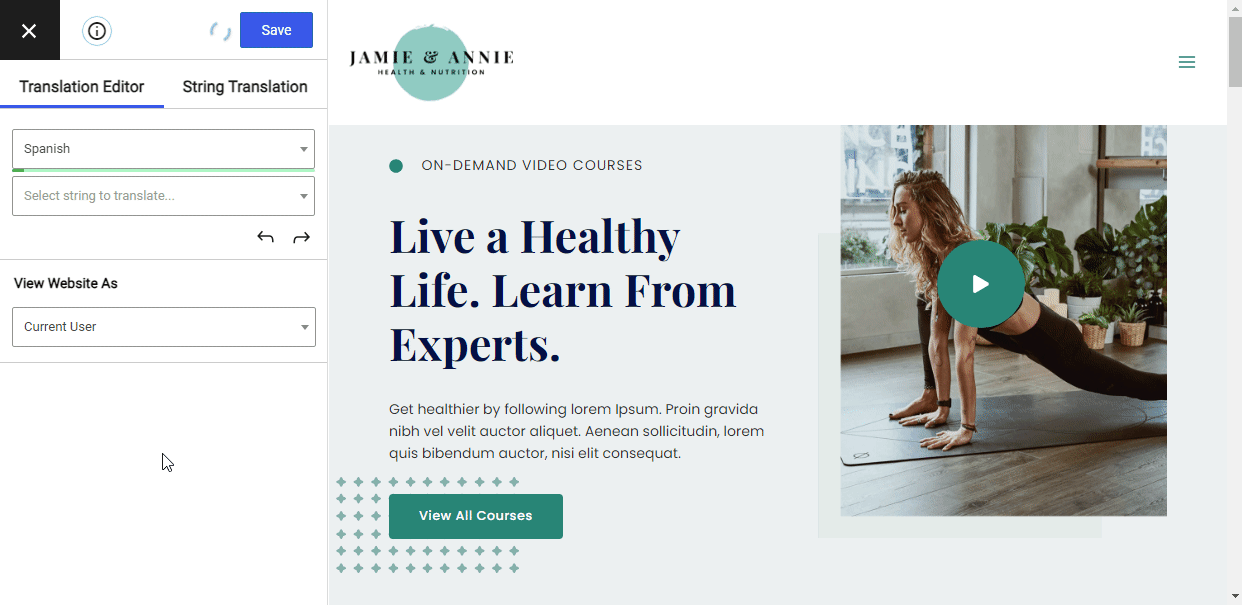
You’ll also be able to go beyond translating text and also localize other key elements such as images.
In terms of your international SEO strategy, TranslatePress can handle all the key details of on-page global SEO including:
- Using an optimized URL structure (subfolders);
- Creating a multilingual XML sitemap for your international content;
- Adding the proper hreflang attribute to all content and sitemaps;
- Translating URL slugs and SEO metadata.
To learn more about how it works, check out our full guide to creating a multilingual WordPress website.
Launch Your International SEO Strategy Today
We live in a global world, so having an international SEO strategy is a great way to expose your website to new people and boost your traffic.
However, if you want to nail global SEO, you need to do some planning. In this post, we went over some key research and technical best practices to create an effective strategy for your international search engine optimization efforts.
If you follow our international SEO checklist, you can be confident that your site is set up for success.
If you’re still planning your multilingual site, check out our ultimate guide to creating a multilingual website. It will teach you everything that you need to know about the technical process. And if you’re using WordPress, you can use TranslatePress to make the process as simple as possible:
TranslatePress Multilingual
Do you still have any questions about developing an international SEO strategy? Let us know in the comments!
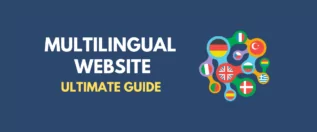


Thank you for sharing this informational and helpful content. I learned a lot and this article cleared up some of my confusion that is related to this topic. This content can truly be used as a guideline for those business owners who are planning to have a wider reach.
Thanks again for sharing!